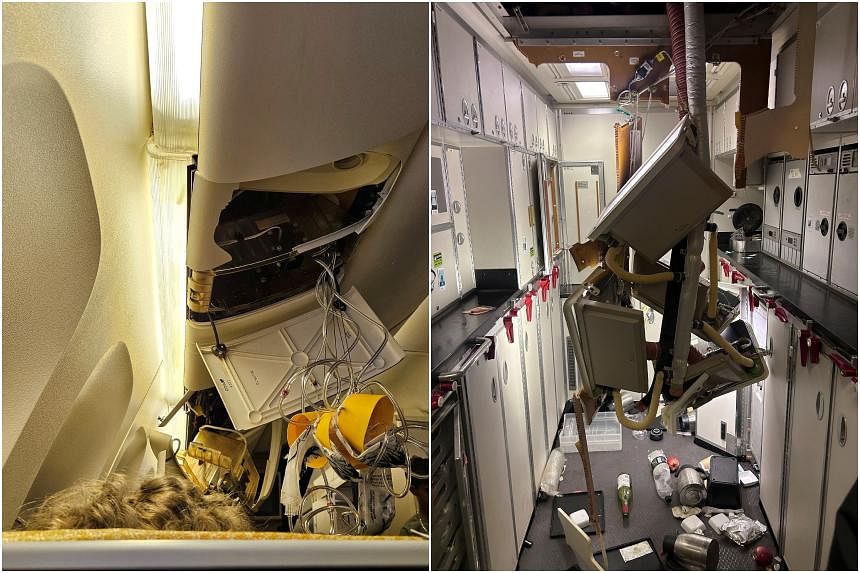SINGAPORE – A Singapore Airlines flight had to make an emergency landing in Bangkok on May 21 after encountering sudden, extreme turbulence, which resulted in one death and dozens of passengers injured.
The circumstances surrounding the incident on SQ321 are under investigation, and one expert said it was one of the worst he has seen in his 30 years in the industry.
While it is not uncommon to encounter in-flight turbulence, such episodes can have severe consequences.
Between 2009 and 2022, America’s Federal Aviation Administration (FAA) recorded that 163 passengers and crew members were seriously injured by turbulence on aircraft registered in the United States.
Here is what you need to know about turbulence.
1. What is turbulence?
Professor of urban climatology Matthias Roth described atmospheric turbulence as irregular, chaotic and unpredictable motions in the airflow.
Turbulence can be caused by storms, mountains, weather fronts and strong air currents such as jet streams, said Dr Roth, who is from the department of geography at the National University of Singapore (NUS).
Turbulent motions are usually not visible, he noted. This particular type of turbulence, which is often called clear air turbulence, is caused by changes in wind speed, air temperature or pressure over short distances. They are difficult to avoid because they are not directly visible, are hard to predict and do not show up on a weather radar.
Associate Professor Steve Yim from the Asian School of the Environment at the Nanyang Technological University (NTU) said turbulence can be caused by wind shear – a sudden change in wind speed and direction due to differences in air temperatures at different altitudes.
The World Meteorological Organisation called wind shear a “major hazard” for aviation, especially when operating at lower altitudes.
AccuWeather, an American weather forecasting firm, has posited that rapidly developing thunderstorms near the flight path of SQ321 likely contributed to the violent turbulence.
Mr Dan DePodwin, AccuWeather’s senior director of forecasting operations, said a review of satellite and lightning data clearly shows explosive thunderstorm development close to the flight path.
“Developing thunderstorms often have strong updrafts, a zone of upward moving air that rises very rapidly, sometimes at more than (160kmh) and can leave pilots with little time to react if it occurs directly in front of the plane,” he said.
“It’s possible the plane encountered a situation like this which thrust the plane up in altitude, causing a severe change in altitude in a short amount of time.”

